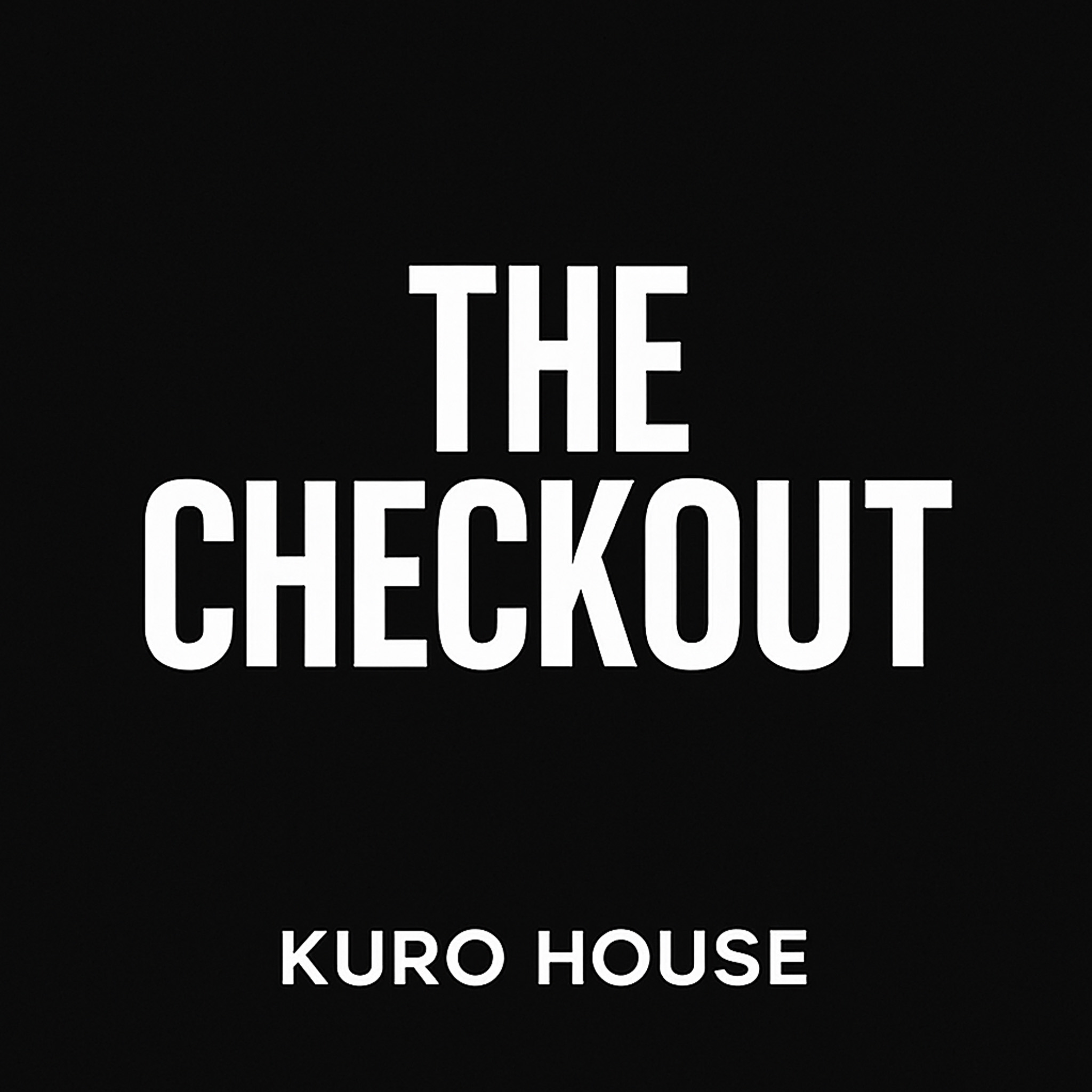Listen To The Show
Transcript
Welcome back to The Checkout by Kuro House — quick, sharp takes on the retail and tech moves that matter. Today we’re unpacking five stories from the last 24 hours, from AI-powered trolleys to heritage brand M&A, a UK supermarket earnings wake-up call, and two retail expansions that underline how bricks-and-mortar still evolves. I’ll tell you who’s doing what, why it matters, and the concrete details you need to file away.
Waitrose is quietly trialling an AI computer-vision system that recognises products as customers put them into trolleys, in what Retail Gazette reports is a “very small scale” trial at its Bracknell store. The tech comes as a handlebar-like device shoppers attach to a standard Waitrose trolley; customers scan barcodes much like the existing self-scan handsets, then back-facing cameras verify the item once it’s in the trolley — and the device gives a real-time tally of products and prices on a bigger screen. Waitrose told The Grocer that it’s exploring this for “more frictionless payment” while keeping conventional checkouts for customers who want human interaction, and the devices are dispensed from a charging bank at the entrance when a shopper scans their loyalty card. Practicalities are spelled out in the trial: loose produce still needs to be weighed at in-aisle scales and a barcode scanned, bakery items must be chosen on the device’s screen before being placed in the trolley, and yellow reduced-price stickers have to be scanned manually. The supplier is Israeli firm Shopic, which markets the tech as a way to “understand everything that happens on your retail floor” — including location data that shows aisle dwell time, route mapping and shelf interactions. Shopic also points to commercial uses: the screen can deliver contextually relevant ads and offers and act as a retail-media channel, so this is simultaneously a payments experiment and a potential new advertising touchpoint. The story sits alongside wider retail AI moves — think Morrisons’ digital-twin supply-chain trials and Debenhams Group’s new AI skills academy — signaling that grocers see in-store computer vision as both an efficiency and analytics upgrade, but one that raises privacy and labour questions retailers will have to manage.
Castore has completed the acquisition of Belstaff from Jim Ratcliffe’s INEOS group, according to The Retail Bulletin, in a deal whose financial terms were not disclosed. As part of the transaction INEOS will make what both parties call a “significant strategic investment” in Castore, and the two say they will combine Castore’s online retail networks, supply-chain capabilities and technical know-how with Belstaff’s iconic heritage. Belstaff, founded in 1924, brings longstanding credibility in premium menswear and heritage motorcycle apparel — think waxed jackets and classic silhouettes — and Castore is pitching this as a move to push further into premium categories. Tom Beahon, Castore’s co-founder and CEO, framed Belstaff as an “iconic brand with unparalleled heritage” and called the acquisition a “dream come true,” noting INEOS and Belstaff’s management had steered the brand back to profitability. Ashley Reed, Belstaff’s chairman, said Castore’s disruptive growth and resilience made them a compelling partner and that combining resources could accelerate Belstaff’s transformation. The public messaging emphasizes complementary strengths — heritage and product credibility on one side, digital-first retailing and supply-chain scale on the other — but the lack of disclosed terms means we’ll be watching closely for how much capital and control INEOS retains and what that “strategic investment” looks like in practice.
FatFace has expanded into Germany by launching on Zalando, Retail Bulletin reports, putting both womenswear and menswear — including pieces from its premium Copper & Black womenswear collection — in front of Zalando’s German customer base. The retailer says initial trading has been positive and it expects strong sales into the autumn, with plans to broaden its Zalando assortment over coming months to include accessories and footwear and to use the platform as a springboard into other European markets. The move follows a strong trading period for FatFace: full-price sales rose 6.6% in the first half of the year and sales through the Next Label channel jumped 86% year-on-year, giving the brand momentum and distribution leverage. Alexandra Dalwood, FatFace’s head of partners, positioned the Zalando launch as building on the benefits of “joining the Next family,” saying the platform launch is an important step in building global brand awareness and reaching a new German audience. Strategically, listing on Zalando lets FatFace avoid heavy investment in country-level infrastructure at first while testing product-market fit and price sensitivity in Germany, but the brand will need to manage assortment timing, returns and local marketing to convert Zalando traffic into a loyal customer base. Expect the brand to monitor KPIs like conversion rates, repeat purchase and average order value closely as it rolls out accessories and footwear into the marketplace.
GlobalData’s senior retail analyst Eleanor Simpson-Gould, writing for RetailTimes, lays out a stark update on ASDA after its Q2 FY2025 results for the quarter ending 30 June 2025: ASDA is now running last among Britain’s leading food and grocery players and remains the only major grocer with declining sales. GlobalData notes the wider UK food & grocery market actually accelerated by 5.4% between April and June 2025, which makes ASDA’s decline more pronounced; the analyst estimates ASDA’s market share will fall 0.8 percentage points in 2025, pushing it closer to Aldi and increasing the risk of dropping out of the traditional “Big Four.” George, ASDA’s clothing arm, remains one of the retailer’s brighter spots, but even George’s like-for-like growth slowed to 2.5% against a weak comparative, and the competitive environment is tightening — Tesco launched F&F clothing on its online marketplace in May 2025, which complicates ASDA’s clothing growth prospects. Simpson-Gould flags back-to-school as a critical period for ASDA, advising the retailer to emphasise product quality features — things like reinforced knees and stain-resistant fabrics — to appeal to cost-conscious families. On the estate side, ASDA’s convenience format is a relative strength: management plans to open 20 new Express stores in October 2025, which GlobalData interprets as a pragmatic move to address proximity shortcomings versus Sainsbury’s and Tesco and a lever to rebuild relevance. Bottom line: ASDA needs tactical wins on product differentiation and convenience footprint while arresting a revenue decline that’s already costing market share.
Primark has opened its first standalone Primark Home store in Great Britain at Trafford Palazzo in Manchester, RetailTimes reports, unveiling a two-floor space of nearly 12,000 square feet dedicated to interiors. The new store stocks plush bedding, cosy throws, decorative accessories, storage solutions, and a mezzanine level devoted to Primark’s travel range — luggage, packing cubes and travel-friendly accessories — and kicked off with a live DJ to greet early customers. Primark also refreshed its existing Trafford Palazzo store with expanded womenswear, upgraded Health & Beauty fixtures and a new Nails beauty studio, and it’s staging a city-wide promotion: six £100 vouchers are hidden across Manchester with clues posted on the @primark.home Instagram starting at 9:30am. The retailer says the Home assortment will lean into autumn/winter trends — warm harvest colourways, motifs like foxes and hedgehogs, autumnal florals and neutral layering — plus an “elevated” Halloween offering and essentials for students heading to uni. Primark’s higher-end Primark Edit will be available too, with items like 500-thread-count bedding, very plush towels, premium home fragrances and refined ceramic tableware, signaling the brand wants to be taken seriously on both value and style. This Trafford Palazzo opening complements the standalone Home debut in Belfast earlier in the year, and Primark is rolling click & collect for homeware across Great Britain, which suggests a layered omnichannel push: large-format inspirational destinations plus local convenience and online pickup.
That’s our run-through for today: five moves that show retail isn’t standing still — AI and computer vision trialled at trolley level, a heritage brand bought by a digital-first challenger, marketplace-driven international expansion, a supermarket battling to stop a market-share slide, and a major value retailer doubling down on destination home retail. If there’s one through-line it’s this: whether the change is technological, strategic or experiential, execution and the customer signals that follow will separate winners from the rest. Thanks for listening to The Checkout by Kuro House — I’ll see you tomorrow with another concise take on what’s shaping commerce and tech.


